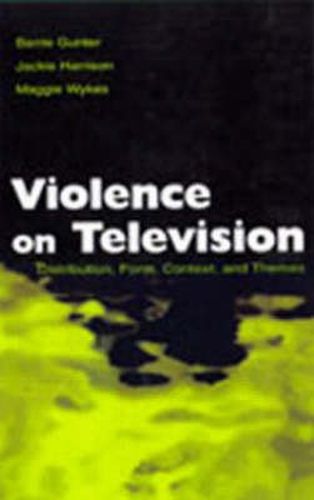Readings Newsletter
Become a Readings Member to make your shopping experience even easier.
Sign in or sign up for free!
You’re not far away from qualifying for FREE standard shipping within Australia
You’ve qualified for FREE standard shipping within Australia
The cart is loading…






TV violence has long been identified as a significant causal agent in relation to the prevalence of crime and violence in society. Critics have accused the medium of presenting excessive quantities of violence, to the point where it is virtually impossible for viewers to avoid it. This work presents the findings of what is to date the largest British study of violence on TV ever undertaken. One chapter is included to give a comparison of findings from Britain and the USA. The book concludes that it is misleading to accuse all broadcasters of presenting excessive quantities of violence in their schedulaes. This does not deny that problematic portrayals were found. But the most gory, horrific and graphic scenes of violence were generally contained within broadcasts available on a subscription basis or in programmes shown at times when few children were expected to be watching. This factual analaysis proves that broadcasters were meeting their obligations under their national regulatory codes of practice.
$9.00 standard shipping within Australia
FREE standard shipping within Australia for orders over $100.00
Express & International shipping calculated at checkout
TV violence has long been identified as a significant causal agent in relation to the prevalence of crime and violence in society. Critics have accused the medium of presenting excessive quantities of violence, to the point where it is virtually impossible for viewers to avoid it. This work presents the findings of what is to date the largest British study of violence on TV ever undertaken. One chapter is included to give a comparison of findings from Britain and the USA. The book concludes that it is misleading to accuse all broadcasters of presenting excessive quantities of violence in their schedulaes. This does not deny that problematic portrayals were found. But the most gory, horrific and graphic scenes of violence were generally contained within broadcasts available on a subscription basis or in programmes shown at times when few children were expected to be watching. This factual analaysis proves that broadcasters were meeting their obligations under their national regulatory codes of practice.